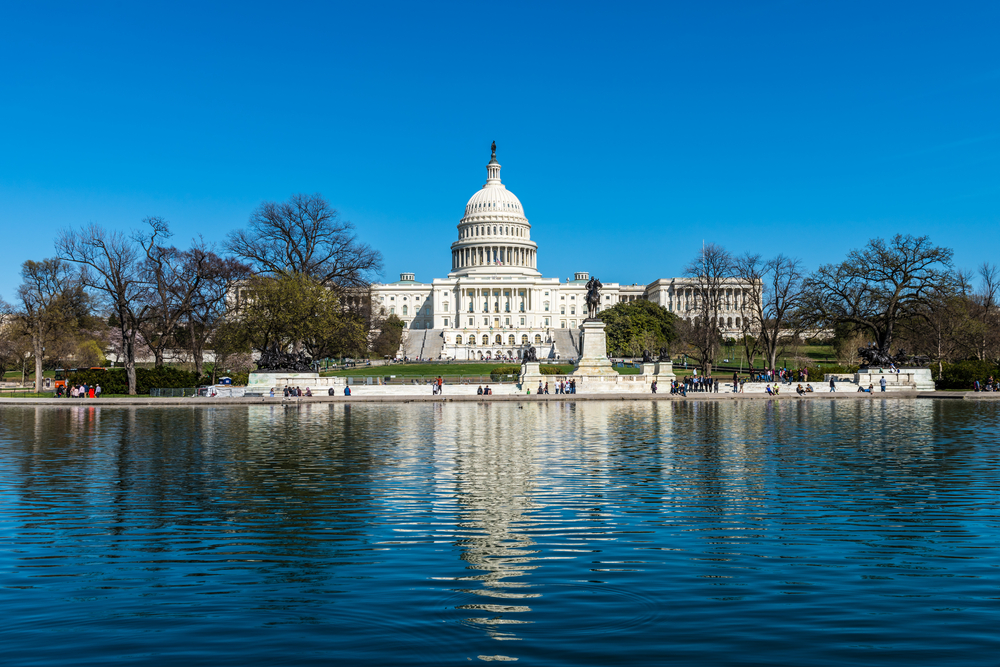
First rule: There are no rules. These resources are completely free and at your disposal. Use as much, or as little, as you want. Study casually, or work to create a portfolio of academic work that will blow the socks off of the educational establishment.
Feel free to adapt the materials for your own purposes. We expect families, business people, backpackers, college students, high school kids, middle aged vacationers, and retirees who are on a late life adventure to take these materials and run with them. We’d be very happy for teachers or travel group leaders to add these materials to their study abroad packets as well.
The nature of open source is collaboration, so please feel free to contribute when you become aware of resources we haven’t listed, or you have project ideas that we haven’t developed. Send us your work and inspire others to reach higher and deeper as they travel!
Our goal with this project is to inspire adventure and further education through experiential learning around the world. Please send us a note and let us know how you used these resources!
Buffet Style Learning
Does the menu look overwhelming? Looking for a formula to use as a skeleton for your studies in the USA? We’ve divided the USA into regions for these resources to help focus your studies in a narrower band. The Northeast, roughly encompasses everything from Washington DC north and east inland including Washington DC, Pennsylvania, New York, New Jersey, Connecticut, Rhode Island, Massachusetts, Maine, New Hampshire, and Vermont.
Choose:
- Two books
- Two films
- Three articles
- One Problem & Solution or Project Option
- One Cultural Assignment
Table of Contents
- Books
- Books for Kids
- Films
- Articles
- Project Options
- Problems & Solutions
- Cultural Assignments
- Create Your Own Coursework
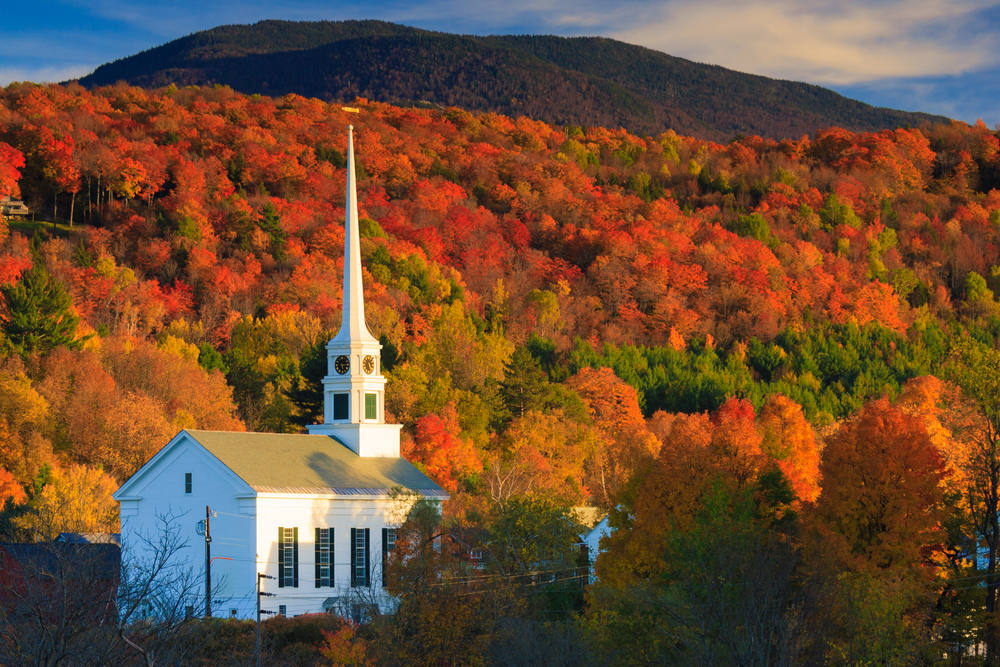
Book Recommendations
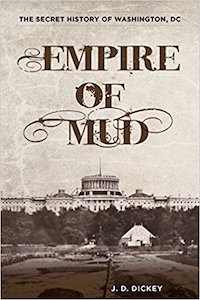 Empire of Mud: The Secret History of Washington, DC
Empire of Mud: The Secret History of Washington, DC
by J.D. Dickey
Washington, DC, gleams with stately columns and neoclassical temples, a pulsing hub of political power and prowess. But for decades it was one of the worst excuses for a capital city the world had ever seen. Before America became a world power in the twentieth century, Washington City was an eyesore at best and a disgrace at worst. Unfilled swamps, filthy canals, and rutted horse trails littered its landscape.
Political bosses hired hooligans and thugs to conduct the nation’s affairs. Legendary madams entertained clients from all stations of society and politicians of every party. The police served and protected with the aid of bribes and protection money. Beneath pestilential air, the city’s muddy roads led to a stumpy, half-finished obelisk to Washington here, a domeless Capitol Building there. Lining the streets stood boarding houses, tanneries, and slums. Deadly horse races gouged dusty streets, and opposing factions of volunteer firefighters battled one another like violent gangs rather than life-saving heroes.
The city’s turbulent history set a precedent for the dishonesty, corruption, and mismanagement that have led generations to look suspiciously on the various sin–both real and imagined–of Washington politicians. Empire of Mud unearths and untangles the roots of our capital’s story and explores how the city was tainted from the outset, nearly stifled from becoming the proud citadel of the republic that George Washington and Pierre L’Enfant envisioned more than two centuries ago.
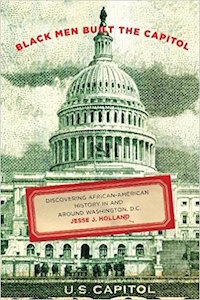 Black Men Built the Capitol: Discovering African-American History In and Around Washington, D.C.
Black Men Built the Capitol: Discovering African-American History In and Around Washington, D.C.
by Jesse Holland
A story most Americans don’t know.
*Slaves built the Capitol, White House, and other important Washington structures
*The National Mall sits on the site of the city’s once-bustling slave market
*The grounds that are now Arlington National Cemetery were once a self-sustaining village for former slaves
Millions of people visit the National Mall, the White House, and the U.S. Capitol each year. If they only hear the standard story, a big question remains: Where’s the black history? Packed with new information and archival photos, Black Men Built the Capitol answers this question.
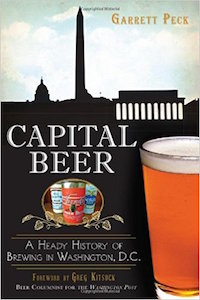 Capital Beer: A Heady History of Brewing in Washington, D.C.
Capital Beer: A Heady History of Brewing in Washington, D.C.
by Garrett Peck
Imagine the jubilation of thirsty citizens in 1796 when the Washington Brewery–the city’s first brewery–opened. Yet the English-style ales produced by the early breweries in the capital and in nearby Arlington and Alexandria sat heavy on the tongue in the oppressive Potomac summers. By the 1850s, an influx of German immigrants gave a frosty reprieve to their new home in the form of light but flavorful lagers.
Brewer barons like Christian Heurich and Albert Carry dominated the taps of city saloons until production ground to a halt with the dry days of Prohibition. Only Heurich survived, and when the venerable institution closed in 1956, Washington, D.C., was without a brewery for fifty-five years. Author and beer scholar Garrett Peck taps this high-gravity history while introducing readers to the bold new brewers leading the capital’s recent craft beer revival.
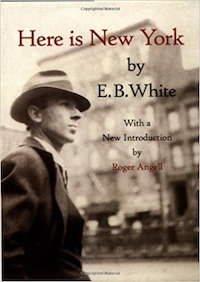 Here is New York
Here is New York
by E.B. White
Perceptive, funny, and nostalgic, E.B. White’s stroll around Manhattan remains the quintessential love letter to the city, written by one of America’s foremost literary figures. The New York Times has named Here is New York one of the ten best books ever written about the metropolis, and The New Yorker calls it “the wittiest essay, and one of the most perceptive, ever done on the city.
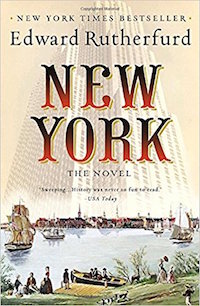 New York: The Novel
New York: The Novel
by Edward Rutherfurd
Edward Rutherfurd celebrates America’s greatest city in a rich, engrossing saga, weaving together tales of families rich and poor, native-born and immigrant—a cast of fictional and true characters whose fates rise and fall and rise again with the city’s fortunes. From this intimate perspective we see New York’s humble beginnings as a tiny Indian fishing village, the arrival of Dutch and British merchants, the Revolutionary War, the emergence of the city as a great trading and financial center, the convulsions of the Civil War, the excesses of the Gilded Age, the explosion of immigration in the late nineteenth and early twentieth centuries, the trials of World War II, the near demise of New York in the 1970s and its roaring rebirth in the 1990s, and the attack on the World Trade Center.
A stirring mix of battle, romance, family struggles, and personal triumphs, New York: The Novel gloriously captures the search for freedom and opportunity at the heart of our nation’s history.
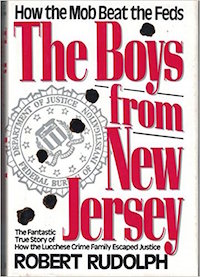 The Boys from New Jersey: How the Mob Beat the Feds
The Boys from New Jersey: How the Mob Beat the Feds
by Robert Rudolph
Of all the extraordinary stories to emerge about the war on organized crime, none is quite so bizarre as the U.S. government’s 1988 prosecution of the notorious Lucchese crime family, the mob that claimed to “own” New Jersey. Federal authorities called it the most ambitious legal attack ever mounted against underworld figures–a sixty-five-page indictment capping a ten-year investigation that would take out an entire organization, from godfather to street soldier, in one knockout blow.
The two-year proceeding became the longest Mafia trial in American history–but it took the jury less than two days to render its verdict: not guilty. On all counts. It was a devastating blow for the government.
How did this happen? Robert Rudolph, the only reporter to cover the story from start to finish, answers that question in a book that turns courtroom drama into a rollicking theater of the absurd.
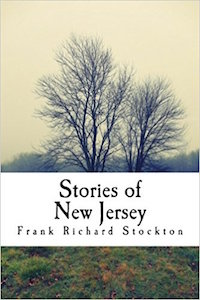 Stories of New Jersey
Stories of New Jersey
by Frank Richard Stockton
This volume of stories, composed of historical incidents, or material connected with the history of New Jersey, is not intended to be a record, even in a condensed form, of the rise and progress of the State. The stories are arranged chronologically, but there has been no attempt to give a complete and continuous account of events or epochs. The material for the stories has been collected from many sources; and the selections have been made with regard to the interest, the instructiveness, and as far as possible the novelty, of the matter chosen. There has been a constant endeavor, however, to present a series of historical incidents in a panoramic form, so that the reading of the stories in their regular succession would give an impressive idea of the discovery and settlement of the State, of its people, manners, and customs, and of its progress and achievements, as it was gradually evolved from the Indian region of Scheyichbi into the State of New Jersey.
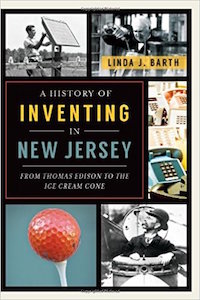 A History of Inventing in New Jersey: From Thomas Edison to the Ice Cream Cone
A History of Inventing in New Jersey: From Thomas Edison to the Ice Cream Cone
by Linda Barth
Many Americans are familiar with Thomas Edison’s “invention factory” in Menlo Park, where he patented the phonograph, the light bulb and more than one thousand other items. Yet many other ideas have grown in the Garden State, too–New Jerseyans brought sound and music to movies and built the very first drive-in theater.
In addition to the first cultivated blueberry, tasty treats like ice cream cones and M&Ms are also Jersey natives. Iconic aspects of American life, like the batting cage, catcher’s mask and even professional baseball itself, started in New Jersey. Life would be a lot harder without the vacuum cleaner, plastic and Band-Aids, and many important advances in medicine and surgery were also developed here. Join author Linda Barth as she explores groundbreaking, useful, fun and even silly inventions and their New Jersey roots.
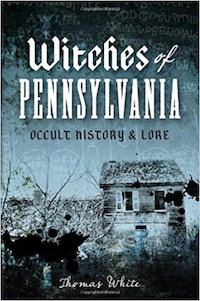 Witches of Pennsylvania: Occult History & Lore
Witches of Pennsylvania: Occult History & Lore
by Thomas White
Since William Penn presided over the state’s only official witch trial in 1684, witchcraft and folk magic have been a part of the history of the Keystone State. English and German settlers brought their beliefs in magic with them from the Old World–sometimes with dangerous consequences. In 1802, an Allegheny County judge helped an accused witch escape an angry mob.
Susan Mummey was not so fortunate. In 1934, she was shot and killed in her home by a young Schuylkill County man who was convinced that she had cursed him. In other regions of the state, views on folk magic were more complex. While hex doctors were feared in the Pennsylvania German tradition, powwowers were and are revered for their abilities to heal, lift curses and find lost objects. Folklorist Thomas White traces the history and lore of witchcraft and the occult that quietly live on in Pennsylvania even today.
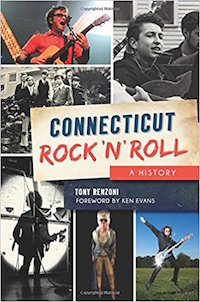 Connecticut Rock ‘n’ Roll: A History
Connecticut Rock ‘n’ Roll: A History
by Tony Renzoni
Long neglected in the annals of American music, the Nutmeg State’s influence on the history of rock’n’roll deserves recognition. Connecticut’s musical highlights include the beautiful harmonies of New Haven’s Five Satins, Gene Pitney’s rise to fame, Stamford’s the Fifth Estate and notable rockers such as Thurston Moore of Sonic Youth, Rivers Cuomo of Weezer and Saturday Night Live Band’s Christine Ohlman.
Rock Hall of Famers include Tina Weymouth and Chris Frantz of the Talking Heads and Dennis Dunaway of the Alice Cooper Band. Some events became legend, like Jimi Hendrix’s spellbinding performance at Yale’s Woolsey Hall, Jim Morrison’s onstage arrest at the New Haven Arena and teenage Bob Dylan’s appearance at Branford’s Indian Neck Folk Festival. With in-depth interviews as well as rare, never-before-seen photos, author Tony Renzoni leads a sonic trip that captures the spirit and zenith of the local scene.
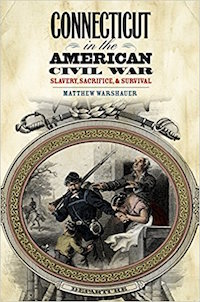 Connecticut in the American Civil War: Slavery, Sacrifice, and Survival
Connecticut in the American Civil War: Slavery, Sacrifice, and Survival
by Matthew Warshauer
Connecticut in the American Civil War offers readers a remarkable window into the state’s involvement in a conflict that challenged and defined the unity of a nation. The arc of the war is traced through the many facets and stories of battlefield, home front, and factory. Matthew Warshauer masterfully reveals the varied attitudes toward slavery and race before, during, and after the war; Connecticut’s reaction to the firing on Fort Sumter; the dissent in the state over whether or not the sword and musket should be raised against the South; the raising of troops; the sacrifice of those who served on the front and at home; and the need for closure after the war. This book is a concise, amazing account of a complex and troubling war. No one interested in this period of American history can afford to miss reading this important contribution to our national and local stories.
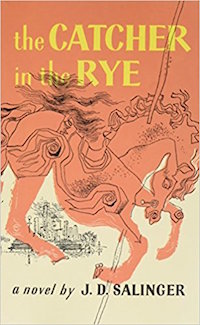 The Catcher in the Rye
The Catcher in the Rye
by J.D. Salinger
The hero-narrator of THE CATCHER IN THE RYE is an ancient child of sixteen, a native New Yorker named Holden Caulfield. Through circumstances that tend to preclude adult, secondhand description, he leaves his prep school in Pennsylvania and goes underground in New York City for three days. The boy himself is at once too simple and too complex for us to make any final comment about him or his story.
Perhaps the safest thing we can say about Holden is that he was born in the world not just strongly attracted to beauty but, almost, hopelessly impaled on it. There are many voices in this novel: children’s voices, adult voices, underground voices-but Holden’s voice is the most eloquent of all. Transcending his own vernacular, yet remaining marvelously faithful to it, he issues a perfectly articulated cry of mixed pain and pleasure. However, like most lovers and clowns and poets of the higher orders, he keeps most of the pain to, and for, himself. The pleasure he gives away, or sets aside, with all his heart. It is there for the reader who can handle it to keep.
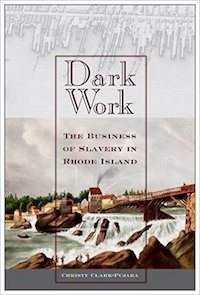 Dark Work: The Business of Slavery in Rhode Island
Dark Work: The Business of Slavery in Rhode Island
by Christy Clark-Pujara
Historians have written expansively about the slave economy and its vital role in early American economic life. In Dark Work, Christy Clark-Pujara tells the story of one state in particular whose role was outsized: Rhode Island. Like their northern neighbors, Rhode Islanders bought and sold slaves and supplies that sustained plantations throughout the Americas; however, nowhere else was this business so important. During the colonial period trade with West Indian planters provided Rhode Islanders with molasses, the key ingredient for their number one export: rum. More than 60 percent of all the slave ships that left North America left from Rhode Island. During the antebellum period Rhode Islanders were the leading producers of “negro cloth,” a coarse wool-cotton material made especially for enslaved blacks in the American South.
Clark-Pujara draws on the documents of the state, the business, organizational, and personal records of their enslavers, and the few first-hand accounts left by enslaved and free black Rhode Islanders to reconstruct their lived experiences. The business of slavery encouraged slaveholding, slowed emancipation and led to circumscribed black freedom. Enslaved and free black people pushed back against their bondage and the restrictions placed on their freedom. It is convenient, especially for northerners, to think of slavery as southern institution. The erasure or marginalization of the northern black experience and the centrality of the business of slavery to the northern economy allows for a dangerous fiction—that North has no history of racism to overcome. But we cannot afford such a delusion if we are to truly reconcile with our past.
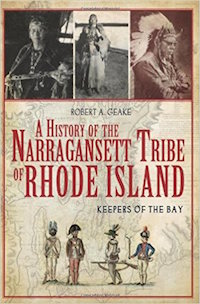 A History of the Narragansett Tribe of Rhode Island: Keepers of the Bay
A History of the Narragansett Tribe of Rhode Island: Keepers of the Bay
by Robert A. Geake
Before Roger Williams set foot in the New World, the Narragansett farmed corn and squash, hunted beaver and deer, and harvested clams and oysters throughout what would become Rhode Island. They also obtained wealth in the form of wampum, a carved shell that was used as currency along the eastern coast. As tensions with the English rose, the Narragansett leaders fought to maintain autonomy.
While the elder Sachem Canonicus lived long enough to welcome both Verrazzano and Williams, his nephew Miatonomo was executed for his attempts to preserve their way of life and circumvent English control. Historian Robert A. Geake explores the captivating story of these Native Rhode Islanders as he chronicles a history of the Narragansett from their early European encounters to the tribes return to sovereignty in the 20th Century.
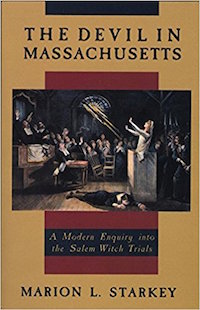 The Devil in Massachusetts: A Modern Enquiry into the Salem Witch Trials
The Devil in Massachusetts: A Modern Enquiry into the Salem Witch Trials
by Marion L. Starkey
This historical narrative of the Salem witch trials takes its dialogue from actual trial records but applies modern psychiatric knowledge to the witchcraft hysteria. Starkey’s sense of drama also vividly recreates the atmosphere of pity and terror that fostered the evil and suffering of this human tragedy.
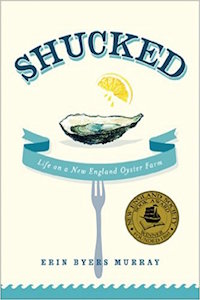 Shucked: Life on a New England Oyster Farm
Shucked: Life on a New England Oyster Farm
by Erin Byers Murray
In March of 2009, Erin Byers Murray ditched her pampered city girl lifestyle and convinced the rowdy and mostly male crew at Island Creek Oysters in Duxbury, Massachusetts, to let a completely unprepared, aquaculture-illiterate food and lifestyle writer work for them for 12 months to learn the business of oysters. SHUCKED is part love letter, part memoir and part documentary about the world’s most beloved bivalves.
An in-depth look at the work that goes into getting oysters from farm to table, SHUCKED shows Erin’s full-circle journey through the modern day oyster farming process and tells a dynamic story about the people who grow our food, and the cutting-edge community of weathered New England oyster farmers who are defying convention and looking ahead. The narrative also interweaves Erin’s personal story?the tale of how a technology-obsessed workaholic learns to slow life down a little bit and starts to enjoy getting her hands dirty (and cold). This is a book for oyster lovers everywhere, but also a great read for locavores and foodies in general.
 The Maine Woods
The Maine Woods
by Henry David Thoreau
Based on Thoreau’s experiences in the forests of Maine on three separate occasions in 1846, 1853 and 1857, The Maine Woods is a captivating portrait of the region in the mid-1800s. Rich with the naturalistic detail that is common with Thoreau’s writing, readers will delight in the exquisiteness with which Thoreau relates his experiences in nature. The Maine Woods is a classic work that will enchant lovers of nature for years to come.
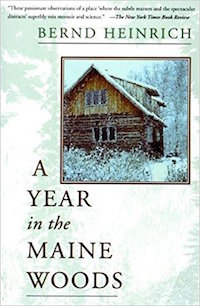 A Year In The Maine Woods
A Year In The Maine Woods
by Bernd Heinrich
Escapist fantasies usually involve the open road, but Bernd Heinrich’s dream was to focus on the riches of one small place—a few green acres along Alder Brook just east of the Presidential Mountains. The year begins as he settles into a cabin with no running water and no electricity, built of hand-cut logs he dragged out of the woods with a team of oxen. There, alone except for his pet raven, Jack, he rediscovers the meaning of peace and quiet and harmony with nature—of days spent not filling out forms, but tracking deer, or listening to the sound of a moth’s wings.
Throughout this year when “the subtle matters and the spectacular distracts,” Heinrich brings us back to the drama in small things, when life is lived consciously. His story is that of a man rediscovering what it means to be alive.
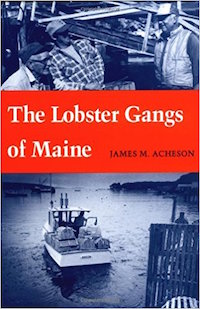 The Lobster Gangs of Maine
The Lobster Gangs of Maine
by James M. Acheson
James Acheson’s detailed account of lobstering in Maine quickly dispels notions that the lobstermen is the eastern version of the cowboy, struggling alone for survival against the elements. In reality, he writes, “the lobster fisherman is caught up in a thick and complex web of social relationships.
Survival in the industry depends as much on the ability to manipulate social relationships as on technical skills.” Acheson replaces our romantic image of the lobsterman with descriptions of the highly territorial and hierarchical “harbor gangs,” daily and annual cycles of lobstering, intricacies of marketing the catch, and the challenge of managing a communal resource.
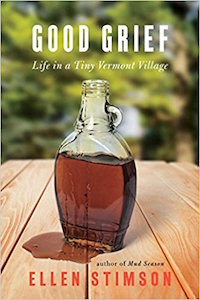 Good Grief: Life in a Tiny Vermont Village
Good Grief: Life in a Tiny Vermont Village
by Ellen Stimson
An endless New England vacation becomes a way of life for one woman and her family.
Ellen Stimson and her husband had such a wonderful time in Vermont that they wondered what living there would really be like. “What if we stayed here . . . forever?” So began the series of adventures and misadventures of Ellen Stimson’s hilarious first book, Mud Season.
Now, having settled the family in Vermont’s rich, muddy soil, they are faced with new challenges of raising kids in the paradise of this very small, very rural town. Good Grief tells the tales of the hopes and dreams of parents just trying to do their best?and not always succeeding. Imagine being the mom of the kid who peed on his teacher’s chair . . . On. Purpose. Now imagine the governor asking you about it! Good Grief is all about the inevitable moment right after somebody says, “What next?”
Ellen Stimson’s irrepressible optimism and good humor prevail as she, her two husbands, their three kids, and various much-loved pets face down real life, and even death and grieving, with good humor intact. This is life in a state where everyone knows everything, and everything is everybody’s else’s business.
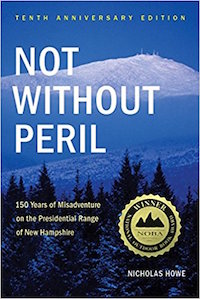 Not Without Peril: 150 Years Of Misadventure On The Presidential Range Of New Hampshire
Not Without Peril: 150 Years Of Misadventure On The Presidential Range Of New Hampshire
by Nicholas Howe
Among the most dangerous mountains in the world, Mount Washington has challenged adventurers for centuries with its severe weather. From the days when gentlefolk ascended the heights in hoop skirts and wool suits to today’s high-tech assaults on wintry summits, this book offers extensive and intimate profiles of people who found trouble on New Hampshire’s Presidential Range, from the nineteenth century through present day.
Veteran journalist Nicholas Howe draws on his investigative skills and familiarity with the mountains of his childhood to create this gripping collection. The result is a compelling story about our changing relationship with the mountains we love and the risks they pose.
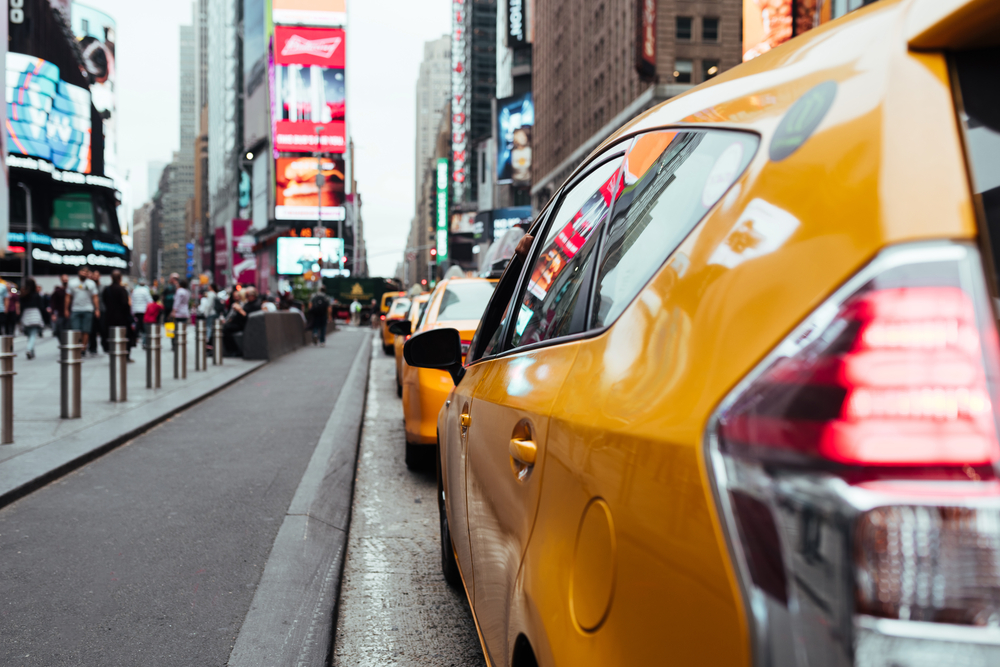
Kids Book Recommendations
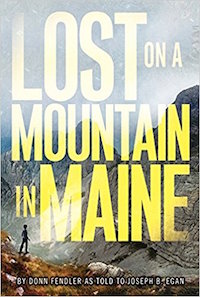 Lost on a Mountain in Maine
Lost on a Mountain in Maine
by Donn Fendler
Based on the true account of a boy’s harrowing journey through the vast wilderness of the Katahdin Mountains, Lost on a Mountain in Maine is a gripping survival story for all ages.
Twelve-year-old Donn Fendler steps away from his Boy Scout troop for only a minute, but in the foggy mountains of Maine, a minute is all it takes. After hours of trying to find his way back, a nervous and tired Donn falls down an embankment, making it impossible for him to be found. One sleepless night goes by, followed by a second . . . and before Donn knows it, almost two weeks have passed, leaving him starving, scared, and delirious.
With rainstorms, black bears, and his fear of being lost forever, Donn’s journey is a physically, mentally, and emotionally charged story told from the point of view of the boy who lived it.
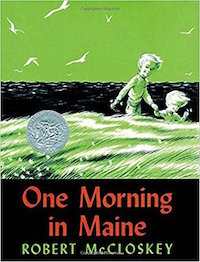 One Morning in Maine
One Morning in Maine
by Robert McCloskey
Today is a special day for Sal because she gets to go to Buck’s Harbour with her dad. But when she wakes up to brush her teeth with her baby sister, she discovers something shocking…. Her tooth is loose!
And that’s just the start of a huge day!
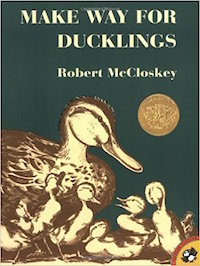 Make Way for Ducklings
Make Way for Ducklings
by Robert McCloskey
Mrs. Mallard was sure that the pond in the Boston Public Gardens would be a perfect place for her and her eight ducklings to live. The problem was how to get them there through the busy streets of Boston. But with a little help from the Boston police, Mrs. Mallard and Jack, Kack, Lack, Nack, Ouack, Pack, and Quack arive safely at their new home.
This brilliantly illustrated, amusingly observed tale of Mallards on the move has won the hearts of generations of readers. Awarded the Caldecott Medal for the most distinguished American picture book for children in 1941, it has since become a favorite of millions.
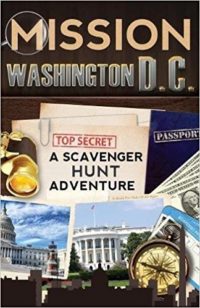 Mission Washington, D.C.: A Scavenger Hunt Adventure
Mission Washington, D.C.: A Scavenger Hunt Adventure
by Catherine Aragon
Mission Washington, D.C. takes your young travelers through the famous sights of D.C., engaging them in an exciting scavenger hunt as you explore city landmarks together.
Say ‘goodbye’ to a trip filled with the stress of keeping everyone entertained. Instead, say ‘hello!’ to a memorable family trip. Imagine – your kids will be excited to sightsee (yes, even at museums!) as you discover the wonders of D.C. as a family.
Mission Washington, D.C. offers a fun vacation for everyone – with a captivating, spy-theme scavenger hunt packed with entertaining activities. When your kids set off on their mission, with the goal of earning enough points to become a special agent.
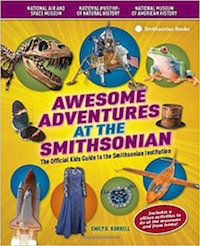 Awesome Adventures at the Smithsonian: The Official Kids Guide to the Smithsonian Institution
Awesome Adventures at the Smithsonian: The Official Kids Guide to the Smithsonian Institution
by Emily B. Korrell
From Dorothy’s red slippers to dinosaurs to the Wright brothers’ plane, the Smithsonian is filled with objects fascinating to kids. Yet choosing what to see at the Smithsonian can challenge even the most enthusiastic families. Packed with activities, information, and pictures, this lively new guide offers children ages 8-12 years a way to navigate the Smithsonian.
Engaging maps, photographs, and illustrations present the main museum halls along with puzzles, games, mad libs, and pages for journal entries, drawings, and superlatives that will help get kids ready for their big trip to the nation’s capital and keep them focused and attentive as they navigate the world’s largest museum complex that is the Smithsonian Institution. Awesome Adventures at the Smithsonian (spiral bound) is the perfect way to engage any child on their big trip to Washington, DC, and the Smithsonian.
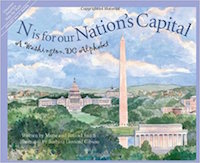 N Is for Our Nation’s Capital: A Washington DC Alphabet
N Is for Our Nation’s Capital: A Washington DC Alphabet
by Marie Smith
Bursting with history like no other city in the world, Washington DC is a tribute to the United States, its people and even the world. Monuments spot the landscape, tourists spot the monuments and their legends are learned. The story of DC doesn’t stop there. Look beyond the monuments. That’s exactly the Washington DC readers will discover with N is for our Nation’s Capital: A Washington DC Alphabet. From Abigail Adams to the National Zoo and all the cherry blossoms, flags, houses and presidents in between, N is for Our Nation’s Capital is like a field trip in a binding.
Rhymes capture readers’ interest and expository text expands on those points and others with little-known but fascinating facts. Did you know the cherry blossom trees that are an integral part of DC’s scenery were gifts from Japan? Or that Mrs. Taft planted the first two? Readers will eagerly turn the pages to learn more true facts like these. Wonderfully written in engaging rhymes for young readers backed with expository text that reveals even more for the more inquisitive reader make N is for our Nation’s Capital the perfect keepsake and tribute to Washington DC. Authored by the husband and wife team of Roland and Marie Smith and backed by Barbara Gibson’s stylish illustrations, N is for our Nation’s Capital is a perfect fit on any bookshelf. This great exploration into our country’s nerve center will have teachers and parents excited and help introduce one of the world’s most important cities to children from sea to shining sea.
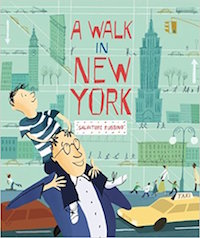 A Walk in New York
A Walk in New York
by Salvatore Rubbino
New York City — the perfect place for a boy and his dad to spend the day! Follow them on their walk around Manhattan, from Grand Central Terminal to the top of the Empire State Building, from Greenwich Village to the Statue of Liberty, learning lots of facts and trivia along the way.
In this unabashed ode to America’s biggest city, Salvatore Rubbino’s fresh, lively paintings and breezy text capture the delight of a young visitor experiencing the wonders of New York firsthand.
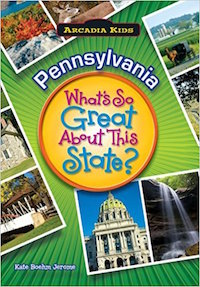 What’s Great about New Jersey? (Our Great States)
What’s Great about New Jersey? (Our Great States)
What’s so great about New Jersey? Find out the top ten sites to see or things to do in the Garden State! We’ll explore New Jersey’s historic parks, exciting museums, popular beaches, and rich history.
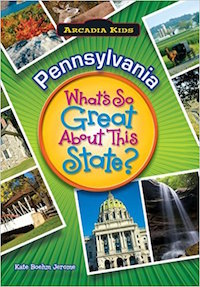 Pennsylvania: What’s So Great About State
Pennsylvania: What’s So Great About State
by Kate Boehm Jerome
Arcadia Kids is a new series of fun, colorful, easy-to-read books for children ages 7-11 featuring attention-grabbing cover art, inviting conversational style content, and vivid full-color images of landmarks and geography. Parents, grandparents, and savvy shoppers will appreciate the feel good factor of purchasing books that are both fun AND educational.DO YOU KNOW… WHY Pennsylvania is known as the birthplace of the nation? (Hint: It has to do with ideas and ink!) WHAT famous place in Pennsylvania has more than 1,400 monuments and markers? (Hint: It honors both “sides.”) Find these answers and more in the Pennsylvania edition of What’s So Great About This State?
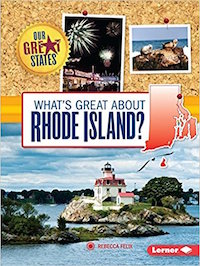 What’s Great about Rhode Island?
What’s Great about Rhode Island?
by Rebecca Felix
What’s so great about Rhode Island? Readers will build skills to identify and summarize the top ten sites to see or things to do in the Ocean State. We’ll explore Rhode Island’s breathtaking beaches, exciting parks, historic landmarks, and fascinating history.
The Rhode Island by Map feature helps students locate all the places covered in the book. A special section provides key state details such as the state motto, capital, population, animals, foods, and more. Take a fun-filled tour of all there is to discover in Rhode Island.
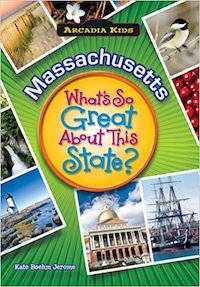 Massachusetts What’s So Great About This State
Massachusetts What’s So Great About This State
by Kate Boehm Jerome
Arcadia Kids is a new series of fun, colorful, easy-to-read books for children ages 7-11 featuring attention-grabbing cover art, inviting conversational style content, and vivid full-color images of landmarks and geography. Parents, grandparents, and savvy shoppers will appreciate the feel good factor of purchasing books that are both fun AND educational.
DO YOU KNOW… HOW kettle ponds formed throughout the state of Massachusetts? (Hint: Think underground ice cubes!) WHAT famous doctor is honored in Springfi eld, Massachusetts? (Hint: A cat tips his hat to this hometown hero!) Find these answers and more in the Massachusetts edition of What’s So Great About This State?
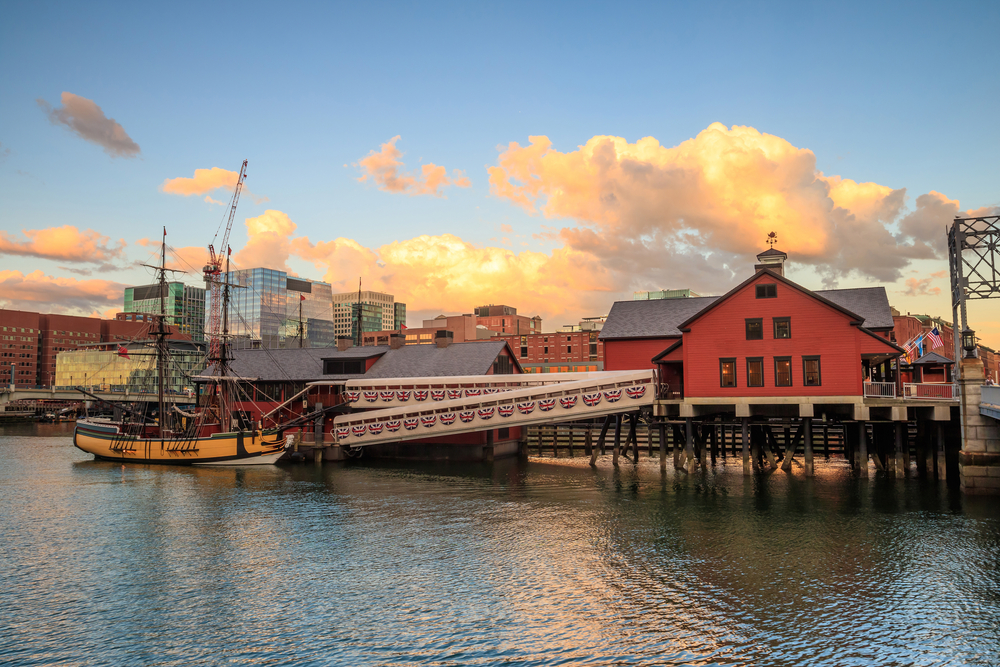
Film Recommendations
A History of New England’s Forests
This video provides an overview of the landscape history of New England, from European settlement to the present, and explains how it has shaped our modern forest. By Harvard Museum of Natural History
Translate – Documentary Film about New England’s Transgendered Community
Funded by Rhode Island PBS and Rhode Island Council for the Humanities, ‘Translate’ is a short documentary film about the struggles of the New England Transgendered community. Winner of the PBS / Independent Lens Film Festival.
Cod: The Fish that Made New England | Pew
Nothing tells a story like the eyewitnesses who were there. Old-timers in New England’s commercial cod fishery don’t want us to forget how we arrived where we are today. These “old salts” remember vastly different conditions in the fishing industry just a few decades ago. In the words of one of them, “it was the most fantastic fishery I ever saw.” Since then, overfishing—catching fish faster than they can reproduce—continues to deplete 10 of our dinner-time favorites, including Atlantic cod. For more information please visit www.NewEnglandFishing.org
Amazing Secrets of New York City
Mafia Documentary – The Five Families of New York in Organized Crime
History of the White House : Documentary on the White House
Narrated by Morgan Freeman.
The Amish: Chapter 1
Chapter 1 of “The Amish,” an intimate portrait of contemporary Amish faith and life. This film examines how such a closed and communal culture has thrived within one of the most open, individualistic societies on earth.
Pennsylvania Fracking Documentary
A short documentary about the impacts of fracking in Pennsylvania with insights from fracking expert Dr. Terry Engelder. Produced for Penn State’s Dr. Kevin Furlong Earth 101 Final Multimedia Project.
Faces of Poverty: Life at the Breaking Point
Reading, Pa. was recently named the poorest city in America, according to recent census figures. Forty-one percent of the city’s residents live below the poverty line.
Charles W. Morgan: The Breaching of the Whaling Industry
This video is about the Charles W. Morgan and its role in the American whaling industry. This documentary placed first for the Connecticut National History Day Contest 2016
Boston Under: After Hours
“Boston Under: After Hours” takes you behind the scenes into the MBTA’s tunnels in the overnight hours when most people are sleeping. Documentary filmmakers followed MBTA employees who perform critical maintenance and repair work at nation’s fifth busiest transit system every night.
Underground: A Documentary on Music in Central MA
A documentary covering the various genres of local music in Worcester Massachusetts and other surrounding central Mass areas.
Cape Cod Canal: Modern Marvels
The town of Sandwich, Massachusetts lies near the canal’s north entrance, the Massachusetts Maritime Academy near its south. A swift running current changes direction every six hours and can reach 5.2 miles (8.4 km) per hour during the receding ebb tide. The waterway is maintained by the United States Army Corps of Engineers and has no toll fees. It is spanned by the Cape Cod Canal Railroad Bridge and two highway bridges—the Bourne and the Sagamore. Traffic lights at either end govern the approach of vessels over 65 feet (19.8 m).
Megastructures Documentary – The Big Dig in Boston – National Geographic
The Big Dig in Boston, Massachusetts, US, is a massive road infrastructure project which was undertaken to improve the flow of traffic, alleviating chronic congestion across Boston and the surrounding commuter areas, and to replace the outdated elevated Central Artery road that effectively split the city in half, alienating the North End and Waterfront neighbourhoods from the economic life of the city.
The Appalachian Trail, New Hampshire
Maybe the most incredible state on the Appalachian Trail! Very hard hiking through The Whites but worth every second. This is New Hampshire on the AT seen through my eyes. Enjoy!
Two Minute Tour of New Hampshire: 50 States for Kids – FreeSchool
Want to know a little bit more about New Hampshire but only have two minutes? Take our two minute tour of the Granite State, the ninth state in the United States of America. Learn about some of its important history, as well as some state symbols (state tree, state bird, state motto, state flag, state flower, etc.). FreeSchool is great for kids!
Riches & Remains: The Legacy of Vermont Copper Mining
This documentary is an in-depth exploration of the 150-year history of Vermont’s copper mines from 1803 to 1958 and the subsequent Superfund environmental cleanup of the Elizabeth Mine.
White Nationalism in Vermont: Ryan Roy
Vermont-based white nationalist, Ryan Roy, participated in the Charlottesville “Unite the Right” Rally. Roy agreed to allow us to question him on his ideology and experiences since the rally. The views expressed in this video do not reflect those of Polaris Mediaworks.
A Vermont Sugar House
Making Real Maple Syrup “Sugaring” in Ira, Vermont. Buy some syrup…please. Enjoy the video!
Maine America’s Coast – Dobbs Productions- Bar Harbor, Maine
The Maine Coast — so distant from most of America — is in fact where America began. Rugged and raw, it has inspired a nation’s creative genius — poets, painters and ponderers. And still today it is the coast to which millions of Americans turn for recreation or re-creation. It borders the state of Maine but this is America’s coast.
A Day In The Life of A Maine Scallop Fisherman
This documentary was created by Tori Tibbetts for her Senior Celebration. This video documented drag fishing for Atlantic Bay Scallops.
Lobsters (HD) | JONATHAN BIRD’S BLUE WORLD
In the north Atlantic, the American Lobster is the undisputed king of crustaceans. It’s also a tremendously important commercial catch. While all the other fisheries are collapsing, why are lobsters resisting the trend? Jonathan goes out with a Maine lobsterman to learn why, and he dives down below to find the biggest lobsters he has ever seen. This segment won a New England Emmy Award!
Belfast, Maine – Sardine Packing
Wiseman has more cuts per minute in this segment of the fllm than the sardine packers. Watch those fingers, people.
Bridges of New York City
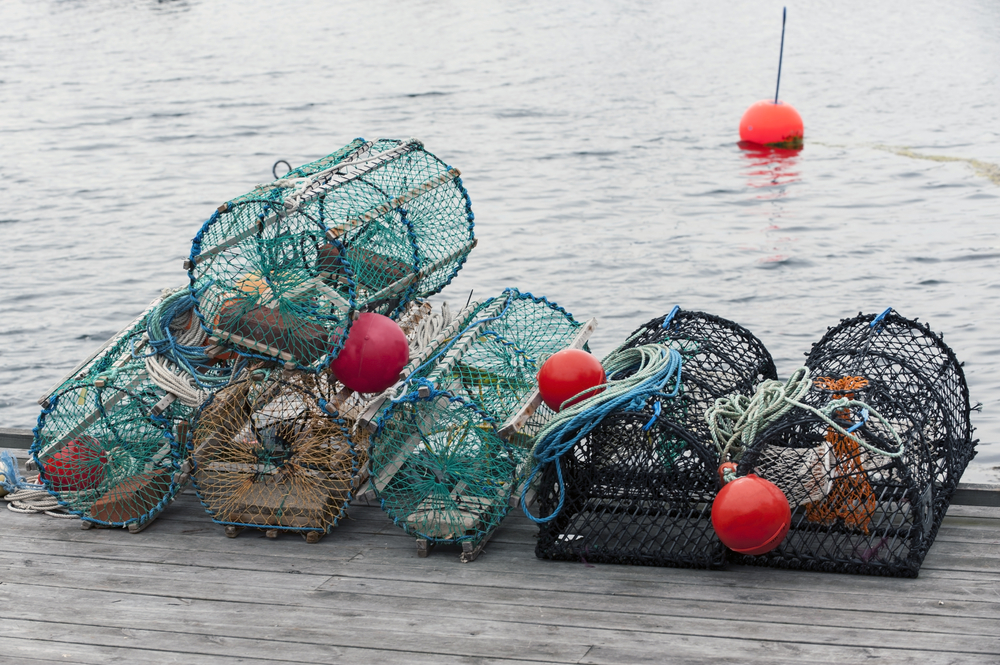
Article Recommendations
Cleaning up ‘Methadone Mile’ and Other Drug Havens – NECN
Pittsburgh Officials May Dave ‘Deflected’ Attention From Lead-Contaminated Water – The Guardian
A Colossal Fracking Mess – Vanity Fair
History of New England Fisheries -Eastern USA Visitor
Spanning the decades: A look at the history of New York City’s tunnels and bridges – NY Daily News
In Amish Country, the Future Is Calling – NY Times
A Heroin Epidemic Is Plaguing New Jersey – Vice News
Human Trafficking: The Crisis in Boston – WGBH
Massachusetts Requests Supply of Canadian Renewable Energy – Global News
Solar and Energy Storage in New England: It’s Complicated – PV Magazine
Obama Says Racism Evident in ‘Violent Opposition’ to Programs to Help Minorities – Washington Times
New England’s divide: Vermont vs. New Hampshire Politics – CNN
RI + New England’s Crumbling Infrastructure Costs Drivers Billions -Go Local Prov
Maine Encyclopedia – Archive of articles about Maine
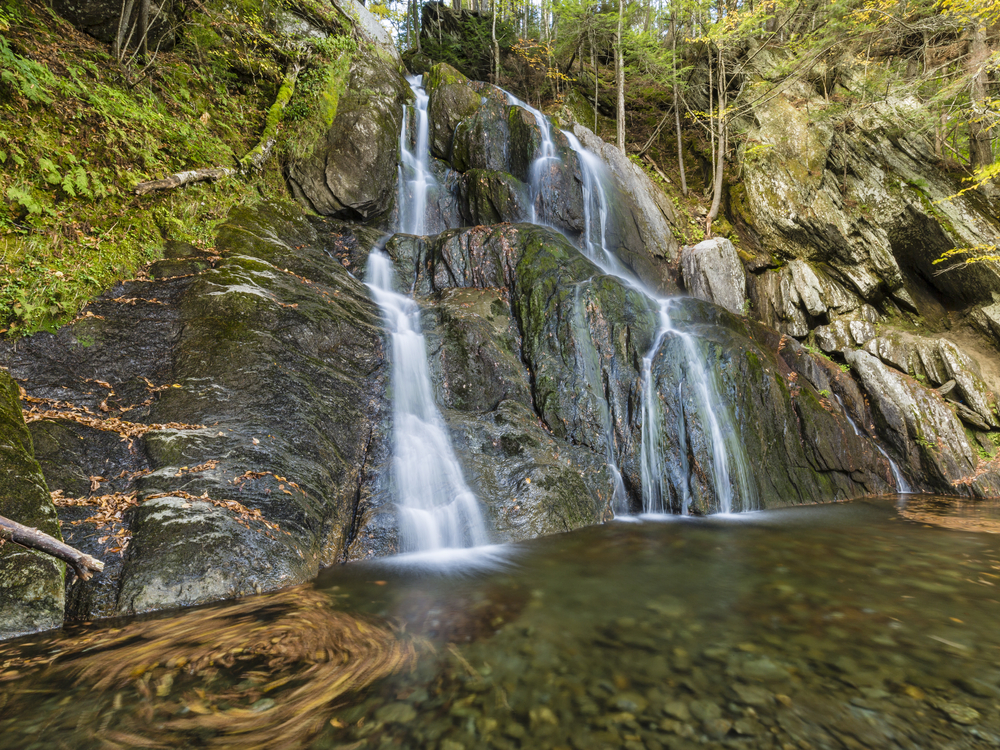
Project Options:
Fisheries in New England
The ocean has always been a major industry in the Northeastern USA. Fishing continues to be a backbone industry in big cities and small towns. Lobster, cod, halibut, scallops, oysters, and more are pulled from the sea, day after day.
Examine the history of fishing in New England and the current state of the fish populations, conservation, and the economic aspects of the industry. Try to tell the stories through the experiences of individuals, rather than just researching the overall trends. Visit the docks. Speak to the fishermen in person. Visit the processing plants and talk to individuals working in the industry.
Immigration in NYC
New York City is the iconic hub of immigrant arrival. Visit the museum at Ellis Island and learn about the early arrival of immigrants to the USA. Tour the immigrant districts of modern day NYC and enjoy the food, different stores, and the language and cultural immersion that results.
Interview some immigrants in NYC today. Ask them about their experience coming to, and adjusting to America. What was their life like before? What is it like now? Why did they choose to come to America? What are the struggles that they face?
The Appalachian Trail
The Appalachian Trail runs through much of the Northeastern United States and it ends in Maine. What is the history of the AT? How long does it take to walk the whole thing? Who keeps the trail? Discover some of the stories and personalities of the AT.
Walk a portion of the Appalachian Trail yourself.
Washington DC
The capital of the USA is a must see destination. Steeped in history while at the same time making it every day, it’s a fascinating place to visit. How did Washington DC come to be the capital of the country? Uncover some of the historical events or persons who interest you most in Washington DC.
Make a point of visiting three lesser known museums or cultural sites and create a video about your explorations in the past and present in Washington DC.
Boston… the Freedom Trail
Boston was home to some of America’s defining moments throughout history. Take the time to walk the entire Freedom Trail (brochures about it are available at any hotel or tourist info point) and walk through history as you get to know Boston. It’s the red line painted on the sidewalks.
Which of the sites on the Freedom Trail meant the most to you? Why? Live blog your walk and thoughts from the Freedom Trail.
Maple Syrup Production
The Northeastern USA is one of only a few regions in the world where maple syrup is produced. Learn something about that process.
What is maple syrup made of? When is it made? What are the steps of the process? Visit a maple sugaring operation if you are there during the right time of year and watch or participate in the process.
Profiles of …..
Conduct a series of at least five interviews within a region. If you’re traveling across the North East it might be interesting to profile people from different states on the same topics. The point of the exercise would be to get a well rounded view of what it is like to live in the the North East USA from a variety of ages, incomes, employments and experiences. This could be conducted as video, or as text. Do an in depth analysis of the experience/information.
People you might profile:
- Farmers
- Teachers
- Restaurant owners/workers
- Clergy or Nuns
- Government officials
- Doctors or nurses
- Cafe owners
- Street vendors
- Children
- Parents
- Drivers
- Artists or musicians
- Laborers
- Cab drivers
- Long term expats
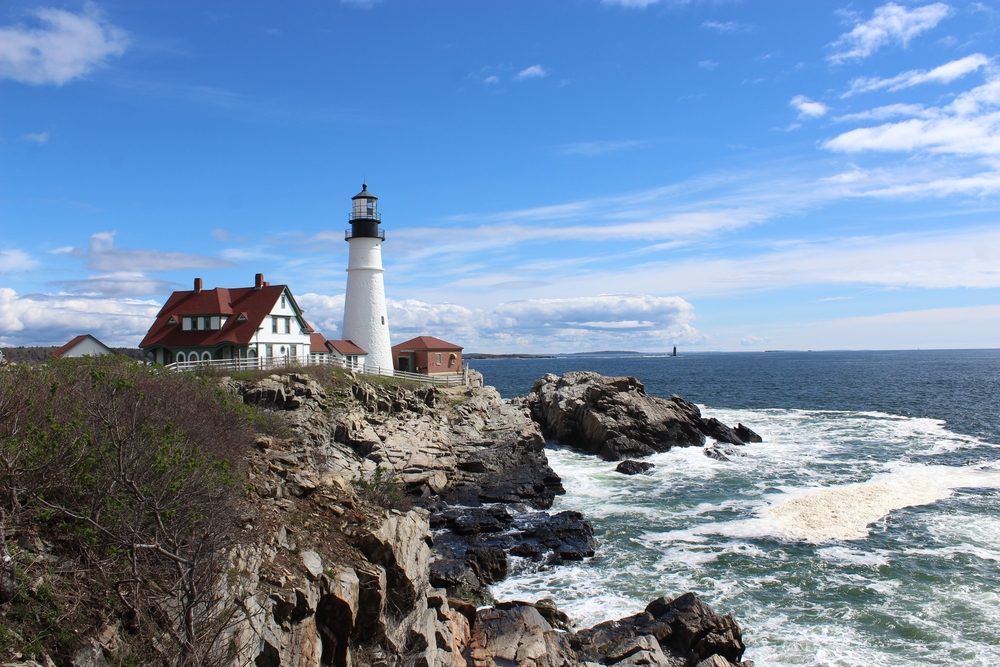
Problems & Solutions
Energy in New England
With Pennsylvania having long been at the forefront of coal mining, and the largest wind farm in the northeast being located in Maine, there is conflict in the North Eastern USA over energy, ecological impacts, and jobs.
Visit a coal mine if you can. And then visit a wind or solar farm. Talk to both ends of the spectrum about the impacts of their industry and the path they see for energy in the USA moving forward.
Has coal cleaned up it’s act? How much coal is still being used in the USA? What are the individual states’ goals for renewable energy conversion in the coming years? Are the Paris or Kyoto accords being adhered to? Why, or why not? What is the community impact of various energy supply methods? What is the ecological impact? Dive deeper than the surface marketing of each method of energy generation and examine the realities for individual communities, as well as each state, and the region over all.
Fracking
Fracking is a method of coal mining that is effective, but highly controversial. Why? Explain exactly what fracking is. Examine the damage done in particular communities and to individual land. Which states allow fracking?
If fracking were outlawed, what are the consequences? What are the options? What have been some of the consequences in communities where fracking has been practiced? What are the ecological implications of fracking?
In your opinion, is the risk-benefit balance of fracking justifiable? Why, or why not?
Human Trafficking
The Obama Justice Department identified human trafficking as a major civil rights issue, estimating that 20,000 people a year are trafficked into the USA, and many more are trafficked within the country.
Examine human trafficking in the USA. Where and how are people being moved into the country? What are the experiences of the trafficked persons like? Which industries are the biggest offenders in human trafficking? What measures are in place to try to stem the tied of trafficked persons and liberate them? Are these working? Where are there success stories? Where does work need to be done? Is there political will behind the fight to end human trafficking in the USA? What can be done by individuals and at the community level to help?
Crumbling Infrastructure
Deteriorating infrastructure is a problem all across the USA. In past years bridges have collapsed and many roadways are worsening. Why now? What is happening at a state and federal level that is allowing this breakdown to happen and continue?
How was the USA’s massive transit infrastructure built? Who is responsible for maintaining it? What are the factors that are affecting its decline?
Are there solutions in some states that are improving infrastructure and transit? What are they?
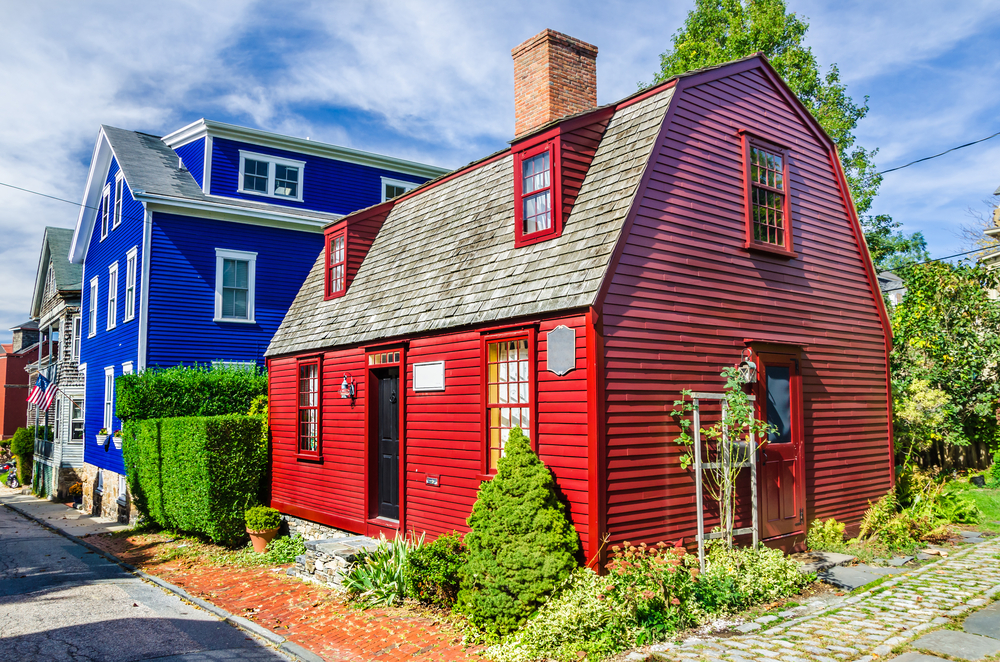
Cultural Assignment Options
Food
The food culture of even this one region of the USA is incredibly diverse. From the farmland of Pennsylvania, to the orchards of Maine, to the rich seafood culture all along the North Atlantic coast, there is plenty to nosh on. Don’t forget the bagels, pizza, and famous delis of New York City!
Don’t just try the foods of North Eastern USA, dive into their production and preparation too. If you find yourself in Amish country, try to eat the fresh, local, farm raised produce in a hole in the wall restaurant in a small town. Visit a dairy farm. Attend a cheese factory. Take a cooking class in NYC, DC, or Boston. Visit an active fishing wharf (early in the morning and then again mid day when boats return). Buy your fish or lobster right off the wharf. Don’t miss a New England Lobster bake or boil.
Make a record (or a video!) of all of the new foods you’re trying as you travel through Australia.
Meaningful Connections
What is a meaningful interaction? You get to decide that. In general, it should be an interaction in which cultural exchange took place and you learned something. Often this will be with a local person; sometimes it will be with another traveler.
Sometimes these interactions look like very little on the outside but are totally life changing on the inside. Other times, they are rock your world amazing from every angle. It could be a meal shared, an afternoon’s excursion, a discussion that opens your eyes in some way, a self revelation that happened without any words exchanged at all.
Spend a day with a local individual or family. Document your experience in photos, interviews and the written word. The best way to interact with locals is to just start chatting with them at markets, on tours or on the street. You can also ask other travelers if they have met anyone who has offered some insight into life in the country. If you are a family who have children attending a local school then have a party, invite a parent to coffee, basically just open up your home to new relationships.
Take a Class
There are many options! Don’t be limited by this list:
- Cooking
- Language
- Art or Crafts
- Dance
- Literature
- Yoga
- Music
Museum Visits
The North Eastern USA has some of the best museums in the world, beginning with the Smithsonian museums in Washington DC, continuing up the coast through NYC and Boston. Don’t miss the museums. So much of the American experience is framed within these walls that they make an excellent starting point for your trip through the USA.
Here are just a few of the options:
- Smithsonian Museums Overview
- Kid friendly Museums and Attractions in DC
- National Geographic Museum
- List of 52 Museums in Washington DC With Details
- List of museums in NYC
- American Museum of Natural History
- Boston Museums
- New York Cities 10 Best Museums
- MOMA
- Philadelphia Museums & Attractions
- Philadelphia Museum of Art
- State of New Jersey Museums
- Rhode Island Museums
- Vermont Museums
- A Guide to Museums in New Hampshire
- Connecticut Museums and Galleries
- Maine Museums
- Directory of Massachusetts Museums
- List of Museums in NY State
Save your ticket stubs!
Volunteer
Volunteering is a great way to get to know a local community and give back a bit to the places that you choose to travel. There are lots of ways to do this, both organized and arranged privately, as well as impromptu opportunities that will pop up.
Organizations to help you find volunteer work in:
- Washington DC
- New York
- Connecticut
- New Jersey
- Pennsylvania
- Rhode Island
- Massachusetts
- New Hampshire
- Vermont
- Maine
Please be advised that TAP is not recommending these, only presenting them as a list of possibilities. Vet your volunteer options carefully.
Live local
Get out of the hostel, rent a place in a local village, or do a homestay. Through websites like Airbnb it’s easy to find places to live locally. Consider a co-living space to develop community with like minded travelers while diving a little deeper and going a little bit more local.
Photo essay or a blog description of why living local was different than living in a hostel. How did this experience change the economics of your stay? What did you learn about the way locals live? What challenged you? What would you do differently next time?
Work Stay
Through an organization like WWOOF, HelpX, or Workaway you can arrange for an opportunity to work in exchange for your room and board in a number of capacities, from farm labour to hospitality. Lots of students make use of these experiences to lower the cost of their travels, while at the same time learning valuable skills or “trying out” various career areas that interest them.
Request feedback in the form of a short evaluation that can be used later for a CV or reference
Public Transportation Project
Take as many types of public transportation as possible. The ferries and water taxis are fun, the subways in NYC and Boston are historic and unique. Amtrak trains run the eastern corridor reliably.
Challenge yourself to take every type of public transportation available while you are in the USA. Create a photo essay or videologue of your adventures. What did you learn?
Attend a Religious Observance
The USA is an interesting blend of deeply held religious values and an increasingly secular society in the public sphere. Most of the USA’s religious history as a result of colonialism is protestant Christian. Before the Europeans arrived, Aboriginal religions provided structure for life, there are pockets of people curating these old beliefs. Islam is a relative newcomer in American culture and is creating some controversy. Unique to the north east and midwest of the USA are the Amish. Take some time to attend various religious observances and see what you can learn. Don’t be afraid to ask questions. How does the religious climate in the USA compare with what you grew up with?
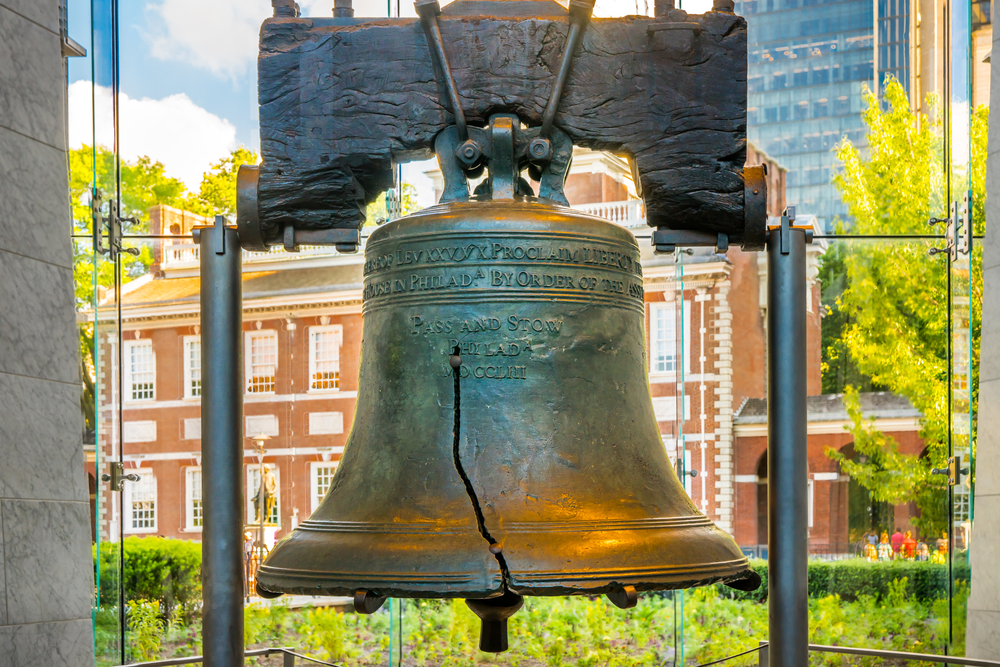
How to Create Your Own Course Work
Ask
Learn to ask for what you want. If you meet someone interesting, ask them to teach you. Ask them for an interview. Ask to shadow them for a day or a week. You’ll be surprised at how eager people are to share what they know and teach when someone shows actual interest. Learn to ask questions. Learn to take social risks by putting yourself out there as a learner.
Plan
You have an idea or an interest. Something surprises you on your journey and all of a sudden you have a burning desire to know more. Plan your attack:
- Narrow your field of study to a particular question or topic.
- Compile resources: Look for teachers. Who knows what you need to know? Or who can you interview to learn more? Are there books or videos on the topic you’re interested in?
- Quantify it. How will you demonstrate what you have learned? A research paper, a video project, a photo essay, through art or music, a blog post, a published piece, an interview series, a mini documentary or do you have some other idea?
Produce
Produce a quality piece of academic work that reflects your experiential learning. The whole key to quantifying outside the box learning is to translate it into something that reflects the value of what you learned and how it contributed to your overall educational process.
Perhaps this will be as simple as a traditional research paper, depending on the depth and length of your study this could be as short as three pages or as long as a dissertation. Maybe you’ll produce a video for YouTube, or something grander, like a mini-documentary. Perhaps you’ll do something concrete instead, an art, or community action project and you’ll tell the story through a photo essay, or a series of blog posts. The possibilities are limited only by the resources you have at hand. Get creative. Think outside the box and truly experience your education.
Do You Have Anything to Add to This Resource Page?
We’re actively seeking to grow these resources in an open-source spirit. Please email jenn(at)bootsnall(dot)com with your edits or submissions of new information or materials.
Thank you!
